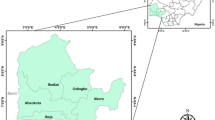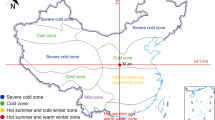Abstract
Outdoor thermal comfort (OTC) has considerable impacts on the health and life of different groups of people. Older people are one of the most vulnerable groups to climate-related diseases. Heat-related deaths are likely to increase due to an increasing proportion of adults aged 65 and over in the total population. Reviewing literature shows that very few studies have investigated OTC for older people compared to indoor environments. This paper aims to present a comprehensive literature review of the recent literature that discusses differences in OTC sensations and preferences between older people and other age groups. Also, this research reviews effective parameters that should be considered during the planning of outdoor places. These parameters are mainly categorized into two groups of environment-and human-based parameters. Existing comfort models are not fully developed to consider the effects of both environment and human-based parameters for OTC assessment for older people. It is important that the ageing aspects of the OTC being taken into account to shed light on the complex factors of OTC studies. Therefore, holistic agendas and comprehensive masterplans can facilitate communication between policy-making entities, scientific institutions, and urban planners to present healthier urban development for the elderly.



Similar content being viewed by others
Availability of Data and Material
Not applicable.
Abbreviations
- OTC:
-
Outdoor Thermal Comfort
References
Aghamolaei, R., Azizi, M. M., Aminzadeh, B., & Mirzaei, P. A. (2020). A tempo-spatial modelling framework to assess outdoor thermal comfort of complex urban neighbourhoods. Urban Climate, 33, 100665. https://doi.org/10.1016/j.uclim.2020.100665
Aghamolaei, R., Fallahpour, M., & Mirzaei, P. A. (2021). Tempo-spatial thermal comfort analysis of urban heat island with coupling of CFD and building energy simulation. Energy and Buildings, 111317.
Aljawabra, F., & Nikolopoulou, M. (2010). Influence of hot arid climate on the use of outdoor urban spaces and thermal comfort: Do cultural and social backgrounds matter? Intelligent Buildings International, 2(3), 198–217.
Andrade, H., Alcoforado, M.-J., & Oliveira, S. (2011). Perception of temperature and wind by users of public outdoor spaces: Relationships with weather parameters and personal characteristics. International Journal of Biometeorology, 55(5), 665–680. https://doi.org/10.1007/s00484-010-0379-0
Baquero Larriva, M. T., & Higueras García, E. (2019). Confort térmico de adultos mayores: Una revisión sistemática de la literatura científica. Revista Española De Geriatría y Gerontología, 54(5), 280–295. https://doi.org/10.1016/j.regg.2019.01.006
Chan, S. Y., Chau, C. K., & Leung, T. M. (2017). On the study of thermal comfort and perceptions of environmental features in urban parks : A structural equation modeling approach. Building and Environment, 122, 171–183. https://doi.org/10.1016/j.buildenv.2017.06.014
Cheung, P. K., & Jim, C. Y. (2018). Subjective outdoor thermal comfort and urban green space usage in humid-subtropical Hong Kong. Energy and Buildings, 173, 150–162. https://doi.org/10.1016/j.enbuild.2018.05.029
Chindapol, S., Blair, J., Osmond, P., & Prasad, D. (2016). Elderly thermal comfort in tropical climates: identifying the knowledge gap. The International Journal of Aging and Society, 6(1), 33–44. https://doi.org/10.18848/2160-1909/CGP/v06i01/33-44
Chindapol, S., Blair, J., Osmond, P., & Prasad, D. (2017). A suitable thermal stress index for the elderly in summer tropical climates. Procedia Engineering, 180(10), 932–943. https://doi.org/10.1016/j.proeng.2017.04.253
Collins, K. J., & Exton-Smith, A. N. (1983). Thermal homeostasis in old age. Journal of the American Geriatrics Society.
Fuller, S., & Bulkeley, H. (2013). Changing countries, changing climates: Achieving thermal comfort through adaptation in everyday activities. Area, 45(1), 63–69.
Galindo, T., & Hermida, M. A. (2018). Effects of thermophysiological and non-thermal factors on outdoor thermal perceptions: The Tomebamba Riverbanks case. Building and Environment, 138(April), 235–249. https://doi.org/10.1016/j.buildenv.2018.04.024
Givoni, B., Noguchi, M., Saaroni, H., Pochter, O., Yaacov, Y., Feller, N., & Becker, S. (2003). Outdoor comfort research issues. Energy and Buildings, 35(1), 77–86. https://doi.org/10.1016/S0378-7788(02)00082-8
Hansen, A., Bi, P., Pisaniello, D., Nitschke, M., Tucker, G., Newbury, J., et al. (2015). Heat-health behaviours of older people in two Australian states. Australasian Journal on Ageing, 34(1), E19–E25. https://doi.org/10.1111/ajag.12134
Huang, J., Zhou, C., Zhuo, Y., Xu, L., & Jiang, Y. (2016). Outdoor thermal environments and activities in open space: An experiment study in humid subtropical climates. Building and Environment, 103, 238–249. https://doi.org/10.1016/j.buildenv.2016.03.029
Jin, H., Wang, B., & Han, B. (2019a). Study on Environment Regulation of Residential in Severe Cold Area of China in Winter: Base on Outdoor Thermal Comfort of the Elderly. Sustainability, 11(22), 6509. https://doi.org/10.3390/su11226509
Jin, H., Wang, B., & Qiao, L. (2019b). Studies of elderly thermal comfort in outdoor environments in severe cold area of China. In International Conference on Sustainability in Energy and Buildings (pp. 32–42). https://doi.org/10.1007/978-3-030-04293-6_4
Knez, I., & Thorsson, S. (2008). Thermal, emotional and perceptual evaluations of a park: Cross-cultural and environmental attitude comparisons. Building and Environment, 43(9), 1483–1490.
Knez, I., Thorsson, S., Eliasson, I., & Lindberg, F. (2009). Psychological mechanisms in outdoor place and weather assessment: Towards a conceptual model. International Journal of Biometeorology, 53(1), 101–111. https://doi.org/10.1007/s00484-008-0194-z
Kotharkar, R., Ramesh, A., & Bagade, A. (2018). Urban heat island studies in South Asia: a critical review. Urban Climate, 24(July 2017), 1011–1026. https://doi.org/10.1016/j.uclim.2017.12.006
Krüger, E. L., Givoni, B., & Rossi, F. A. (2010). Outdoor comfort study in Curitiba, Brazil: effects of gender, body weight and age on the thermal preference. In Proceedings of the Conference Adapting to change: new thinking on comfort. Network for Comfort and Energy Use in Buildings, London.
Lai, D., Lian, Z., Liu, W., Guo, C., Liu, W., Liu, K., & Chen, Q. (2020). A comprehensive review of thermal comfort studies in urban open spaces. Science of the Total Environment, 742, 140092.
Lak, A., Aghamolaei, R., Baradaran, H. R., & Myint, P. K. (2019). Development and validation of elder-friendly urban spaces questionnaire (EFUSQ). BMC Geriatrics, 19(1), 336. https://doi.org/10.1186/s12877-019-1355-0
Larriva, M. T. B., & Higueras, E. (2020). Health risk for older adults in Madrid, by outdoor thermal and acoustic comfort. Urban Climate, 34, 100724.
Mehrotra, S., Bardhan, R., & Ramamritham, K. (2019). Outdoor thermal performance of heterogeneous urban environment: An indicator-based approach for climate-sensitive planning. Science of the Total Environment, 669, 872–886.
Mirzaei, P. A., & Aghamolaei, R. (2021). The hot climate of the Middle East (pp. 205–234). https://doi.org/10.1007/978-981-33-4050-3_10
Nikolopoulou, M., Baker, N., & Steemers, K. (2001). Thermal comfort in outdoor urban spaces: understanding the human parameter. Solar energy, 70(3), 227–235.
Novieto, D. T., & Zhang, Y. (2010). Thermal comfort implications of the aging effect on metabolism, cardiac output and body weight. Adapting to Change: New Thinking on Comfort, 1–9.
Okoli, C. (2015). A guide to conducting a standalone systematic literature review. Communications of the Association for Information Systems. https://doi.org/10.17705/1cais.03743
Pantavou, K., Theoharatos, G., Santamouris, M., & Asimakopoulos, D. (2013). Outdoor thermal sensation of pedestrians in a Mediterranean climate and a comparison with UTCI. Building and Environment, 66, 82–95.
Potchter, O., Cohen, P., Lin, T. P., & Matzarakis, A. (2018). Outdoor human thermal perception in various climates: A comprehensive review of approaches, methods and quantification. Science of the Total Environment, 631, 390–406.
Salata, F., Golasi, I., Verrusio, W., de Lieto Vollaro, E., Cacciafesta, M., & de Lieto Vollaro, A. (2018). On the necessities to analyse the thermohygrometric perception in aged people. A review about indoor thermal comfort, health and energetic aspects and a perspective for future studies. Sustainable Cities and Society, 41, 469–480. https://doi.org/10.1016/j.scs.2018.06.003
Schellen, L., Van Marken Lichtenbelt, W. D., Loomans, M. G. L. C., Toftum, J., & De Wit, M. H. (2010). Differences between young adults and elderly in thermal comfort, productivity, and thermal physiology in response to a moderate temperature drift and a steady-state condition. Indoor Air, 20(4), 273–283. https://doi.org/10.1111/j.1600-0668.2010.00657.x
Schneider, A., Rückerl, R., Breitner, S., Wolf, K., & Peters, A. (2017). Thermal control, weather, and aging. Current Environmental Health Reports, 4(1), 21–29. https://doi.org/10.1007/s40572-017-0129-0
Shih, W.-M., Lin, T.-P., Tan, N.-X., & Liu, M.-H. (2017). Long-term perceptions of outdoor thermal environments in an elementary school in a hot-humid climate. International Journal of Biometeorology, 61(9), 1657–1666.
Shooshtarian, S. (2019). Theoretical dimension of outdoor thermal comfort research. Sustainable Cities and Society, 101495.
Shooshtarian, S., & Ridley, I. (2017). The effect of physical and psychological environments on the users thermal perceptions of educational urban precincts. Building and Environment, 115, 182–198.
Sugiyama, T., & Thompson, C. W. (2007). Outdoor environments, activity and the well-being of older people: conceptualising environmental support. Environment and Planning A, 39(8), 1943–1960. https://doi.org/10.1068/a38226
Tahbaz, M. (2018). Microclimate observation by outdoor fhermal indices (case study of five climates). Iran University of Science & Technology, 28(1), 49–70.
Walker, A. (2015). Active ageing: Realising its potential. Australasian Journal on Ageing, 34(1), 2–8.
Wang, Z., Yu, H., Jiao, Y., Chu, X., & Luo, M. (2019). Chinese older people’s subjective and physiological responses to moderate cold and warm temperature steps. Building and Environment, 149, 526–536. https://doi.org/10.1016/j.buildenv.2018.12.058
World Health Organization. (2002). Active ageing: A policy framework. (No. WHO/NMH/NPH/02.8). World Health Organization.
World urbanization prospects. (2018). World urbanization prospects, Department of Economic and Social Affairs (DESA) (Vol. 14). United Nations.
World Bank (2020) Population-estimates-and-projection report. Available at: https://databank.worldbank.org/source/population-estimates-and-projections. (Accessed 6 July 2021).
Yang, B., Olofsson, T., Nair, G., & Kabanshi, A. (2017). Outdoor thermal comfort under subarctic climate of north Sweden – A pilot study in Umeå. Sustainable Cities and Society, 28, 387–397. https://doi.org/10.1016/j.scs.2016.10.011
Yang, J., Nam, I., & Sohn, J.-R. (2016). The influence of seasonal characteristics in elderly thermal comfort in Korea. Energy and Buildings, 128, 583–591. https://doi.org/10.1016/j.enbuild.2016.07.037
Yung, E. H. K., Conejos, S., & Chan, E. H. W. (2016). Social needs of the elderly and active aging in public open spaces in urban renewal. Cities, 52, 114–122. https://doi.org/10.1016/J.CITIES.2015.11.022
Yung, E. H., Kwan, W., & S., & Chau, C. (2019). Thermal perceptions of the elderly, use patterns and satisfaction with open space. Landscape and Urban Planning, 185, 44–60.
Zhou, Z., Chen, H., Deng, Q., & Mochida, A. (2013). A field study of thermal comfort in outdoor and semi-outdoor environments in a humid subtropical climate city. Journal of Asian Architecture and Building Engineering, 12(1), 73–79.
Zhu, B.-W., Zhang, J.-R., Tzeng, G.-H., Huang, S.-L., Xiong, L., Rosenberg, M., et al. (2017). Public Open Space Development for Elderly People by Using the DANP-V Model to Establish Continuous Improvement Strategies towards a Sustainable and Healthy Aging Society. https://doi.org/10.3390/su9030420
Zong, H., Liu, Y., Wang, Q., Liu, M., & Chen, H. (2019). Usage patterns and comfort of gardens: A seasonal survey of internal garden microclimate in the aged care homes of Chengdu City. International Journal of Biometeorology, 63(9), 1181–1192.
Acknowledgements
Not applicable
Funding
No funding was obtained for this study.
Author information
Authors and Affiliations
Contributions
AL and RA reviewed the current literature of the field and developed the research methodology for this study. All authors read and approved the final manuscript.
Corresponding author
Ethics declarations
Competing Interests
The authors declare that they have no competing interests.
Additional information
Publisher's Note
Springer Nature remains neutral with regard to jurisdictional claims in published maps and institutional affiliations.
Rights and permissions
About this article
Cite this article
Aghamolaei, R., Lak, A. Outdoor Thermal Comfort for Active Ageing in Urban Open Spaces: Reviewing the Concepts and Parameters. Ageing Int 48, 438–451 (2023). https://doi.org/10.1007/s12126-022-09482-w
Accepted:
Published:
Issue Date:
DOI: https://doi.org/10.1007/s12126-022-09482-w




